وبلاگ سپهران | Airlines | Where Do Your Bags Go? The Journey Your Luggage Takes
Baggage is our faithful companion on air journeys. They travel with us to the airport—some are handed over at the check-in counter when we receive our boarding pass to be returned to us at our destination, while others we carry with us into the aircraft cabin.
However, after buying a plane ticket, many travelers wonder; Where do the checked bags go, and how can we avoid losing them?
Understanding how baggage is handled can improve your travel experience and give you peace of mind, knowing your belongings are safe. This guide covers key points such as the journey of your luggage from the moment it’s checked in until it reaches your destination, packing tips, lost luggage procedures, and airline baggage allowance rules.

On every flight, depending on the airline’s policy, we are allowed to carry a specific amount of baggage. Part of it is handed over at check-in as Checked Baggage, and the other part is taken into the cabin as Carry-on Luggage. Airline baggage allowance is divided into two categories, which we will explain below.
Checked Luggage is handed over at the check-in counter and placed in the aircraft’s cargo hold. This section is temperature-controlled, but the air pressure is not regulated; therefore, packaging must be suitable for these conditions. After landing, passengers collect their checked bags from the Luggage Claim area, with waiting times varying depending on the policies of the destination airport.
Carry-on Luggage is placed in the overhead bin or under the seat in front of you. The overhead compartments are located above the passenger rows along the aircraft aisle, and during boarding, passengers are asked to store their bags there to keep the aisles clear and allow others to move freely. For this reason, paying attention to the size of carry-on luggage before the flight is crucial, as each airline sets specific size restrictions for cabin baggage.
Note: The baggage allowance on flysepehran flights is up to 20 kg on domestic routes and between 25 to 30 kg on international routes, plus 6 kg of carry-on baggage. On international flights, checked baggage may include a maximum of 2 pieces, and the allowed dimensions for carry-on baggage are 20 × 40 × 55 cm.
For more information, please refer to the baggage regulations printed on your flight ticket. You can also purchase excess baggage online at: https://flysepehran.com/fa/services/excess-baggage.
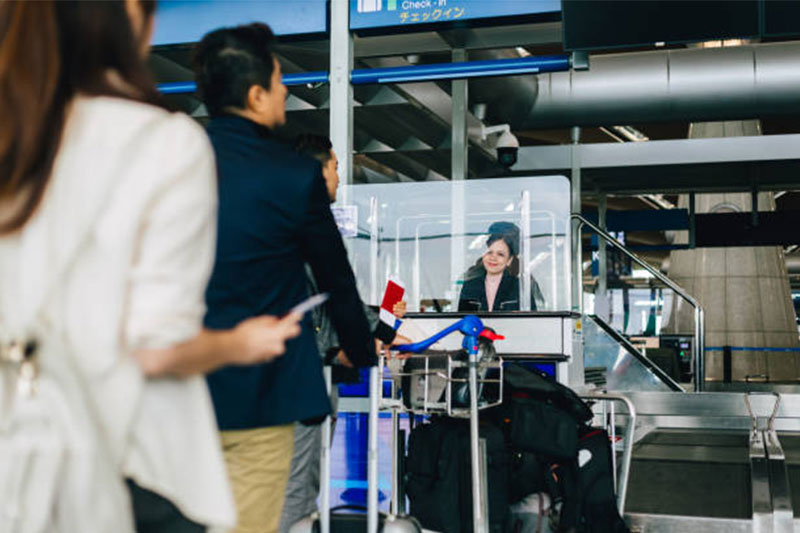
Once your baggage is tagged at the check-in counter, it is placed on the conveyor belts. These belts transport the bag through the airport to the central baggage handling area. There, automated systems scan the baggage tag, and after security screening—and physical inspection if necessary—the bags are directed to their corresponding flight.
In general, your checked Luggage goes through the following steps:
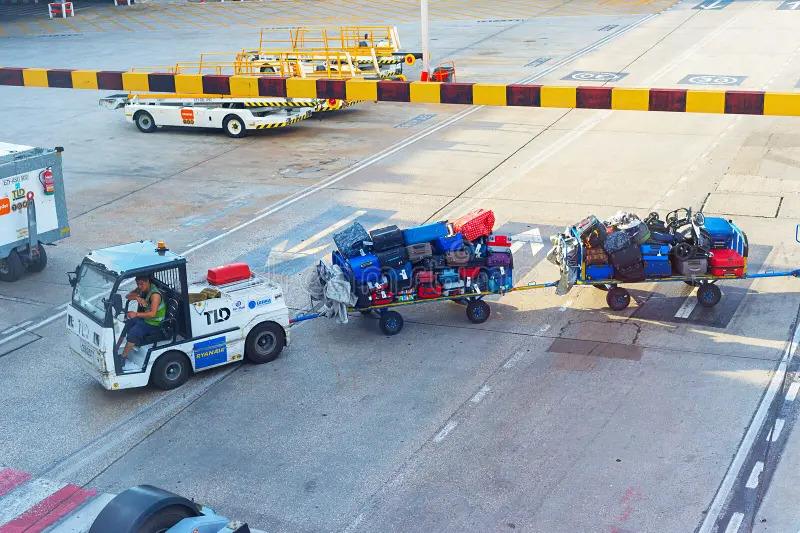
Before your baggage reaches the aircraft, it must go through a security screening process. Most airports use explosive detection systems that employ X-rays and advanced 3D imaging scanners to inspect the contents of the bag. If everything appears normal, the bag is cleared and directed to your flight.
During the initial scan, if an anomaly is found that requires closer inspection, the image is sent to a transportation security officer. The officer reviews the image and decides whether the bag can continue its journey or must undergo further inspection. Bags requiring more thorough checks are transferred to a secure inspection area, where the officer opens and examines the contents. If the bag is locked and cannot be opened, the lock may need to be cut or broken.
Once your Luggage has been sorted, it is ready to be sent to the aircraft. Baggage handlers, known as ramp agents, place the luggage onto special baggage carts or into dedicated containers designed to keep bags secure during transport.
Two tractors then tow these carts across the tarmac to the aircraft. At the plane, conveyor-belt trucks are positioned at the cargo hold door. Ramp agents transfer the luggage from the carts onto the belt, which carries it into the aircraft’s cargo compartment. Inside, bags are arranged by hand in a way that maintains the balance of the aircraft.
This is a physically demanding job, often carried out in tight spaces and under difficult weather conditions. Ramp agents follow proper lifting techniques and use specialized equipment to reduce strain. Once loading is complete, the cargo hold door is securely closed, all equipment is cleared from the aircraft, and final confirmation is given to the flight crew. Now, the baggage is ready for departure.
The environment inside the cargo hold is carefully controlled. Like the passenger cabin, it is pressurized, though usually somewhat cooler. Some aircraft can maintain warmer temperatures in specific sections of the cargo hold (above 18°C / 64°F), making them suitable for transporting live animals or sensitive items such as medicines and perishable food.
In addition, special temperature-controlled containers can be used to keep pharmaceuticals or food at precise conditions. Fire detection systems—and on larger aircraft, fire suppression systems—are also installed in the cargo hold to ensure the safety of your baggage and the flight from beginning to end.
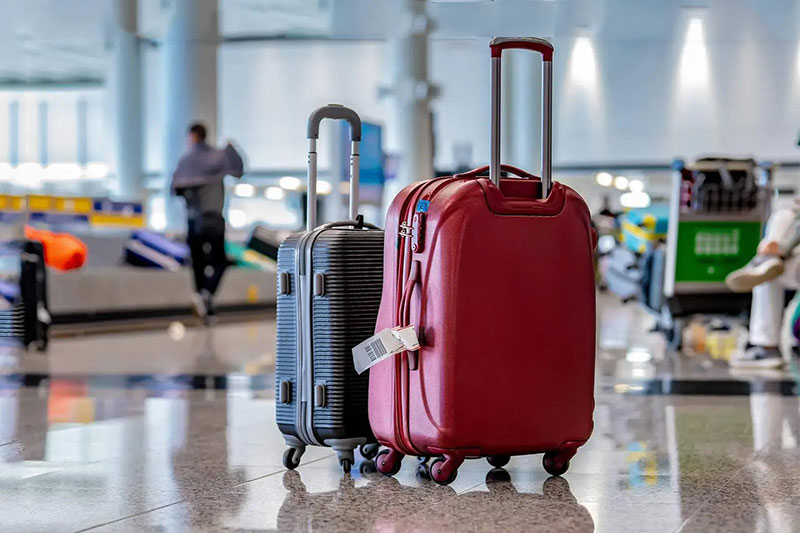
When traveling by air, each airline enforces strict rules for packing luggage to ensure safety and efficiency. For this reason, airlines set weight and size restrictions for every piece of luggage. These limits may vary depending on the airline, destination, or travel class.
Always review your airline’s Luggage policies before you travel.

To Ensure Your Baggage Arrives Safely at Its Destination, Proper Packing Is Essential
First, choose a suitable suitcase or travel bag—preferably with strong zippers, durable wheels, and enough capacity for your trip. Hard-shell suitcases are the best choice for protecting fragile or valuable items.
By following these tips, your journey will be easier and safer.
Checking in baggage can be a convenient and suitable choice for many passengers. Here we discuss the advantages and disadvantages of this service.
The biggest advantage of checking in Luggage is convenience. You can easily carry your heavy or large items through the terminal without worrying about weight. This service also allows the transport of items such as larger liquids or equipment containing batteries that are prohibited in the cabin. Therefore, if you have a lot of luggage or specific items to carry, checking in baggage is very useful.
The main disadvantages include waiting at baggage claim after the flight, the possibility of lost luggage, and additional costs for heavy or large bags (excess baggage). These costs can be especially significant on low-cost airlines, where baggage fees are the responsibility of the passenger.
Recommendation: However, using the checked baggage service is recommended, especially on long trips, as it can help with your comfort and prevent the strain of carrying too much luggage during the journey.
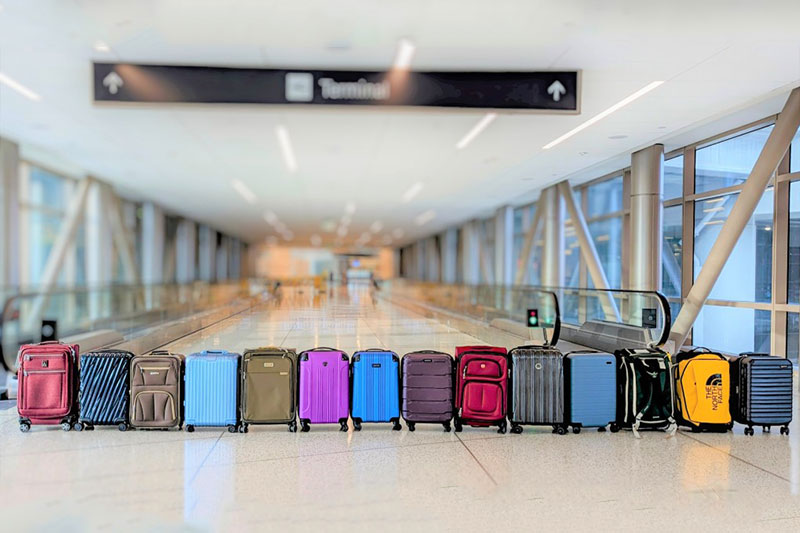
While most airline passengers’ bags arrive on time and in proper condition, sometimes Luggage may be damaged, delayed, or even lost during transport. In such cases, according to air transport regulations and international conventions, airlines are obliged to compensate passengers or cover the costs of repairing damaged baggage.
If your baggage is lost or damaged, airlines must pay compensation according to international and domestic regulations. This compensation may include reimbursement of repair costs or replacement costs for lost items. For more information, please review the rules and regulations of the airline you are traveling with.
If your baggage is lost or delayed, you must report it to the airline’s customer service so that the tracking process can begin. Usually, these reports are reviewed quickly, and the airline attempts to locate your baggage and deliver it to its destination.
If your baggage or its contents are damaged during transport while in the custody of the airline, the airline is obliged to repair it or compensate the passenger for the damage. This compensation is made according to the set financial liability limits.
Airlines are not responsible for pre-existing baggage damage or damage caused by improper packing.
If damaged baggage cannot be repaired, the airline determines compensation based on the value of the baggage and the extent of its depreciation. If you face damaged baggage, you must follow the reporting and claim procedures according to your airline’s policies.
On domestic flights, airlines are not responsible for items excluded from their contract of carriage. However, on international flights, even if the passenger does not declare these items at the time of check-in, the airline will still be responsible for their safekeeping. For more information, please visit the official website of the airline you are traveling with.
Airlines usually do not accept responsibility for the normal wear and tear of Luggage. This wear and tear typically includes damage resulting from long-term use, such as broken wheels or handles due to frequent use. However, airlines cannot disclaim responsibility for damage to wheels, handles, straps, and other parts of checked baggage. If your baggage is damaged, the airline must accept responsibility.
Note: Recommendation for Valuable Items
For your valuable items, such as electronic devices or precious objects, it is advisable to purchase additional insurance so that in case of any problem, you will receive appropriate compensation.
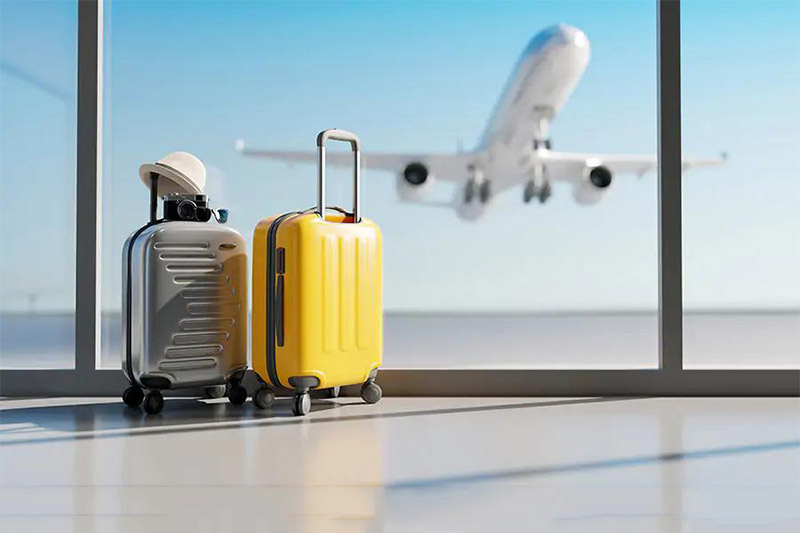
In the event of delayed baggage, it is recommended to document all incurred expenses and request reimbursement from your airline. For more information, please visit the official website of the airline you are traveling with and review the regulations regarding lost baggage.
Airlines usually declare baggage lost between 5 and 14 days after the flight. This period may vary depending on the policies of different airlines. The time it takes to declare baggage lost depends on various factors such as the type of route (international or domestic), the number of airlines involved in the journey, the airline’s tracking system, and other conditions. To track lost baggage, it is recommended to stay in regular contact with the airline and follow up on its status.
After the airline officially declares the baggage lost, it is obliged to compensate the passenger for the value of the baggage contents (taking depreciation and liability limits into account).
In case of lost baggage, it is recommended to stay in contact with your airline and provide all necessary documents to claim compensation.
Assistive devices refer to equipment that helps passengers with disabilities or mobility issues cope better with their condition. These include canes, walkers, wheelchairs, hearing aids, portable oxygen devices, and other medical equipment.
Airline Responsibility on Domestic Flights: If assistive devices are lost or damaged on domestic flights, airlines are obliged to pay the full purchase price of the device to the passenger. Note that for some valuable items, the airline may request a receipt or proof of purchase.
Airline Responsibility on International Flights: On international flights, if assistive devices are lost or damaged, liability will be according to the limits set by international conventions.
Assistive Devices That Must Be Dismantled: If assistive devices such as wheelchairs must be dismantled for storage in the aircraft, the airline is obliged to return the device to the passenger in the same condition as it was received. If these devices are damaged, the airline must carry out the necessary repairs.
For more information and to claim compensation, contact the customer support of the airline you are traveling with.
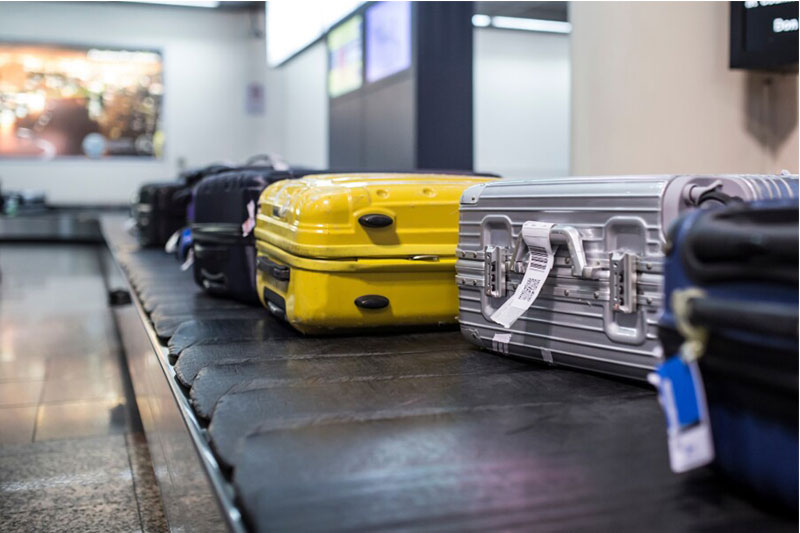
Concerns about lost baggage are completely natural, especially during busy travel periods such as holidays or when IT system disruptions occur. Here are some tips to reduce the likelihood of baggage being lost—or at least to minimize delays, theft, or damage.
Remove old tags from your baggage and avoid attaching ribbons or extra items, as they may interfere with scanner operations.
Always keep essential and valuable items (medication, chargers, documents, jewelry) in your carry-on bag.
If you are worried about your baggage being lost, it is better to choose non-stop flights. Otherwise, select flights that allow sufficient time for connections, since most baggage is lost during transfers.
Before closing your bag, take photos of it and record its contents. This will help you declare the exact contents in case it is lost.
Place your identification details inside the bag. This is especially useful if the external baggage tags are lost, helping the airport return your bag.
What you don’t check in cannot be lost! Therefore, travel light and use carry-on luggage whenever possible, saving time and reducing the risk of loss.
If you are traveling internationally, make sure to review your credit card’s insurance coverage. Some cards provide insurance benefits for compensation in case of lost baggage.
On luxury trips or when carrying many items, sending baggage through postal or independent shipping companies can be a suitable option. This method allows you to take more belongings, often at a lower cost than air baggage.
Budget airlines often offer more non-stop flights, which reduces the risk of lost baggage.
Always check the destination tag on your bag to ensure the correct destination is written.
It is recommended to keep your baggage receipt or tracking tag with you, as it is essential for recovering your bag.
Note: If your baggage is not found, promptly complete the lost baggage report form and submit it to the airline so that the tracking process can begin. After filing the complaint, maintain communication with the airline and regularly follow up on the status of your baggage.
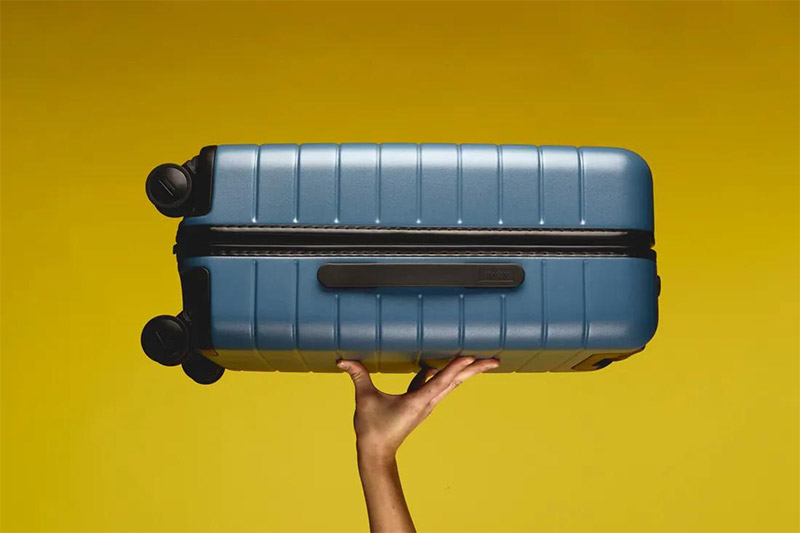
If all of your flights are booked under a single ticket, the baggage is usually transferred automatically to the final destination. This procedure is common for flights operated by the same airline or among partner airlines. However, if you booked your flights separately—even with the same airline—you will usually have to collect your baggage at the first stop, exit the secure area, recheck your baggage, and go through security screening again. Doing this during a short layover can be difficult; therefore, always carefully review the baggage transfer policies at check-in.
Tips to Avoid Baggage Stress on Connecting Flights:
Becoming familiar with the details of how baggage is handled on flights can significantly improve your travel experience. By understanding the differences between carry-on and checked baggage, knowing the airline regulations, and applying effective packing methods, you can ensure that your belongings remain safe and accessible throughout your trip. With proper preparation, travel confidently and enjoy your adventure to the fullest.